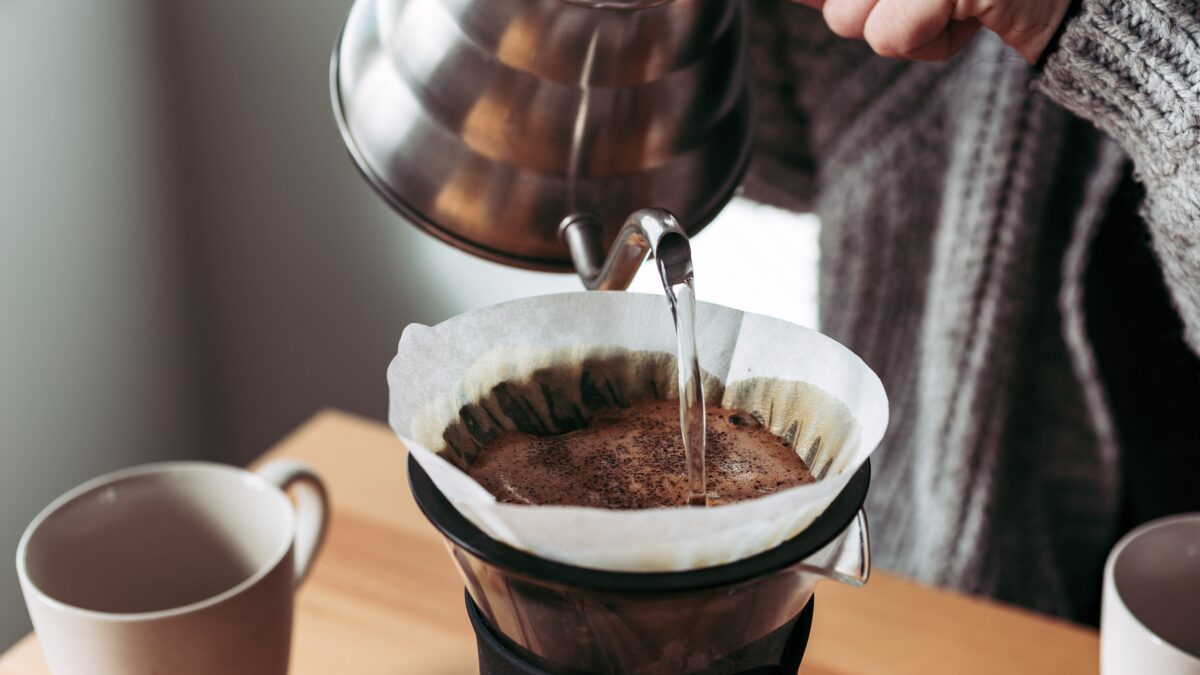No products in the basket.

How to...
Roasting
And some coffee lovers go even further by roasting the beans themselves. Aside from travelling to Ethiopia to pick the beans yourself, this is about as close as you can get to your coffee’s original state.
The process of roasting coffee is quite simple, with only a few steps between you and some amazing scents and tastes. It’s how you’ll get the absolute freshest coffee you could drink. And you don’t need expensive equipment to do it…
Before we roast them, coffee beans are green in colour. Roasting is a critical process; they’re not safe or suitable for consumption beforehand (don’t try biting them or you might crack a tooth!). They’re also smaller – roasting will increase the size of the bean, but they’ll also lose half their weight. So a kilo of green beans will produce half a kilo of roasted ones.
The process of roasting unlocks the aroma and flavour that’s sealed inside the green beans – green beans don’t smell like coffee at all.
You could spend thousands on a roasting machine. Most of these are made for industrial use, and are designed for handling large quantities of beans on a daily basis. (That’s how we do it!)
But there are much cheaper and easier ways to get your roast on in the comfort of your own home.
Instead of the commercial roaster or expensive electric setup, you can make use of a popcorn maker or cast-iron pan / skillet. A popcorn maker is ideal as it’s already used for heating beans (kernels) in a confined area, at similar high temperatures. You can get a stovetop popcorn pan too – some are made with cranks for stirring.
You’ll also need a few metal bowls or a baking tray (to put the roasted beans in while they cool), a pair of gloves or oven mitts, and a long wooden spoon for stirring.
Heat the pan or skillet to around 250 degrees and add a few handfuls of the raw green beans (remember they will expand to twice their size, so don’t put too many in).
Constant stirring as you go along is the best way to get an even, consistent roast. At least every 30 seconds is best. After around 4 minutes, the beans will start audibly cracking and giving off aroma (maybe open a window or turn on the extractor fan at this point).
You’ll be able to see them turning brown at this stage.
As that first phase of cracking goes on, stopping will result in a lighter roast. Light roasts are smoother and have a light brown colour. The lighter the colour, the more caffeine will be in each cup.
If you wait a little longer for the second set of cracks and pops (quieter and more bubbly this time) you’ll end up with a richer, darker roast. Be careful: leaving it much longer after this point will result in a burnt, overroasted load of beans, that just won’t taste very nice.
You’ll have two or three minutes to choose your stopping point.
You can, of course, experiment to find your ideal roast – that’s part of the fun of doing it yourself.
Time to take them off the heat completely, and put them into a metal bowl or baking tray. Give them a stir around to release some of the heat, and leave them to cool for at least half an hour – maybe even a few hours. Again, you can experiment with timing – some like to cool them overnight. It’s up to you. Be careful and don’t forget to wear your oven gloves!
One thing to remember is to not immediately store them in a rigid container, as they do release carbon dioxide gas for around 8 hours after roasting. So they’ll do fine in a ziploc bag, but you might leave the lid open for a bit if you’re storing in a tupperware box. Otherwise they might pop the lid and spill everywhere.
After this, you’re free to grind those beans to your heart’s content and get those tasty cuppas brewed. Check out our guide to grinding coffee beans at home to see how to do it. It’s really quite simple, and a great way to enjoy the very freshest coffee you can get.
So that’s it. It’s not likely you’ll get it perfect on the first try, but as long as you don’t over-roast them and end up with burnt beans, you’ll probably end up with a pretty drinkable cup.
Remember: the finished cup will only be as tasty as the beans you start with. And also remember that you can also dispense with all the fuss of home-roasting and get your ready-roast beans from us. You might even be interested in a subscription to Neighbourhood. We deliver freshly-roasted ground or whole beans direct to your door, sealed in airtight bags that retain maximum freshness from the moment they’re roasted.